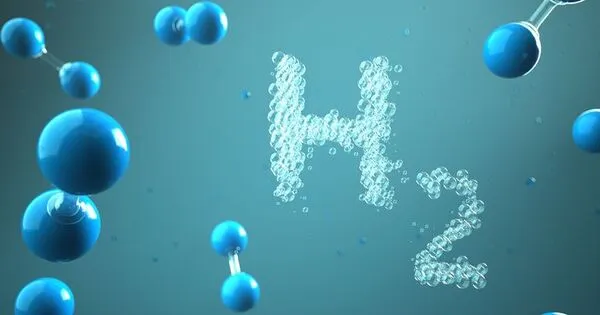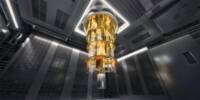The advancement could result in more environmentally friendly rocket fuels. Researchers have created an analytical instrument that uses an ultrafast laser to precisely measure the temperature and concentration of hydrogen. Imperial researchers have created a hydrogen fuel cell that uses iron instead of the rare and expensive platinum, allowing the technology to be used more widely. Hydrogen fuel cells convert hydrogen to electricity with only water vapor as a byproduct, making them an appealing green option for portable power, particularly for vehicles.
Researchers have created an analytical instrument that uses an ultrafast laser to precisely measure the temperature and concentration of hydrogen. The researchers describe a new coherent Raman spectroscopy instrument that is enabled by a setup that converts broadband light from a laser with short (femtosecond) pulses into extremely short supercontinuum pulses with a wide range of wavelengths. Their new approach may aid in the development of greener hydrogen-based fuels for use in spacecraft and airplanes.
“This instrument will provide powerful capabilities for probing dynamical processes such as diffusion, mixing, energy transfer, and chemical reactions,” said Alexis Bohlin of Sweden’s Lulea University of Technology. “Understanding these processes is critical for creating more environmentally friendly propulsion engines.”
Bohlin and colleagues from Delft University of Technology and Vrije Universiteit Amsterdam, both in the Netherlands, describe their new coherent Raman spectroscopy instrument for studying hydrogen in the Optica Publishing Group journal Optics Express. It was made possible by a setup that converts broadband light from a laser with short (femtosecond) pulses into extremely short supercontinuum pulses with a wide wavelength range.
Hydrogen-rich fuel, when made from renewable resources, could have a huge impact on reducing emissions and make a significant contribution to alleviating anthropogenic climate change. Our new method could be used to study these fuels under conditions that closely resemble those in rocket and aerospace engines.
Alexis Bohlin
The researchers demonstrated that this supercontinuum generation could be performed behind the same type of thick optical window found on high-pressure chambers used to study a hydrogen-based engine. This is important because other methods for generating ultra-broadband excitation don’t work when these types of optical windows are present.
“Hydrogen-rich fuel, when made from renewable resources, could have a huge impact on reducing emissions and make a significant contribution to alleviating anthropogenic climate change,” said Bohlin. “Our new method could be used to study these fuels under conditions that closely resemble those in rocket and aerospace engines.”

Getting light in
There is much interest in developing aerospace engines that run on renewable hydrogen-rich fuels. In addition to their sustainability appeal, these fuels have among the highest achievable specific impulse – a measure of how efficiently the chemical reaction in an engine creates thrust. However, it has been very challenging to make hydrogen-based chemical propulsion systems reliable. This is because the increased reactivity of hydrogen-rich fuels substantially changes the fuel mixture combustion properties, which increases the flame temperature and decreases ignition delay times. Also, combustion in rocket engines is generally very challenging to control because of the extremely high pressures and high temperatures encountered when traveling to space.
“The advancement of technology for sustainable launch and aerospace propulsion systems relies on a coherent interplay between experiments and modeling,” said Bohlin. “However, several challenges still exist in terms of producing reliable quantitative data for validating the models.”
One of the hurdles is that the experiments are usually run in an enclosed space with limited transmission of optical signals in and out through optical windows. This window can cause the supercontinuum pulses needed for coherent Raman spectroscopy to become stretched out as they go through the glass. To overcome this problem, the researchers developed a way to transmit femtosecond pulsed laser through a thick optical window and then used a process called laser induced filamentation to transform it into supercontinuum pulses that remain coherent on the other side.
Studying a hydrogen flame
To demonstrate the new instrument, the researchers set up a femtosecond laser beam with the ideal properties for supercontinuum generation. They then used it to perform coherent Raman spectroscopy by exciting hydrogen molecules and measuring their rotational transitions. They were able to demonstrate robust measurements of hydrogen gas over a wide range of temperatures and concentrations and also analyzed a hydrogen/air diffusion flame similar to what would be seen when a hydrogen-rich fuel is burned.
The researchers are now using their instrument to perform a detailed analysis in a turbulent hydrogen flame in hopes of making new discoveries about the combustion process. With a goal of adopting the method for research and testing of rocket engines, the scientists are exploring the limitations of the technique and would like to test it with hydrogen flames in an enclosed slightly pressurized housing.
















